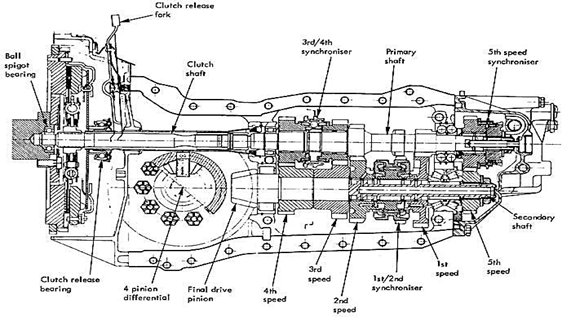Gear Box
Introduction:
A gear box is a device for converting the speed of a shaft from one speed to another. In the process the torque T is also changed. This can be done with pulley and chain drives but gears have advantages over these systems. A good example is that of winch in which a motor with a high speed and a low torque is geared down to turn the drum at a low speed with a large torque. Similarly, a marine engine must use a reduction gear box to reduce the speed of the engine to that of the propeller. Other examples are motor vehicles, lathes, drills etc.
Need for the Gear Box:
Almost all automobiles in use today are driven by internal combustion engines with cyclical combustion, working on the spark ignition or diesel principle. The factors determining the power output and performance characteristics of internal combustion engines. In addition to the many advantages of the internal combustion engine, such as high power-to-weight ratio, relatively good efficiency and relatively compact energy storage, it has three fundamental disadvantages:
•unlike steam engines or electric motors, the combustion engine is incapable of producing torque from rest (zero engine speed)
•an internal combustion engine only produces maximum power at a certain engine speed and
•fuel consumption is strongly dependent on the operating point in the engine’s performance.

Fig: Gear Box – cutaway
Functions of the Gear Box:
An automobile is able to provide varying speed and torque through its gear box. Various functions of a gear box are listed below:
- To provide high torque at the time of starting, vehicle acceleration, climbing up a hill.
- To provide more than forward speeds by providing more than one gear ratios. In modern cars, five forward gears and reverse gear is provided. For given engine speed, higher speed can be obtained by running in higher (4th and 5th) gears.
- Gear box provides a reverse gear for driving the vehicle in reverse direction